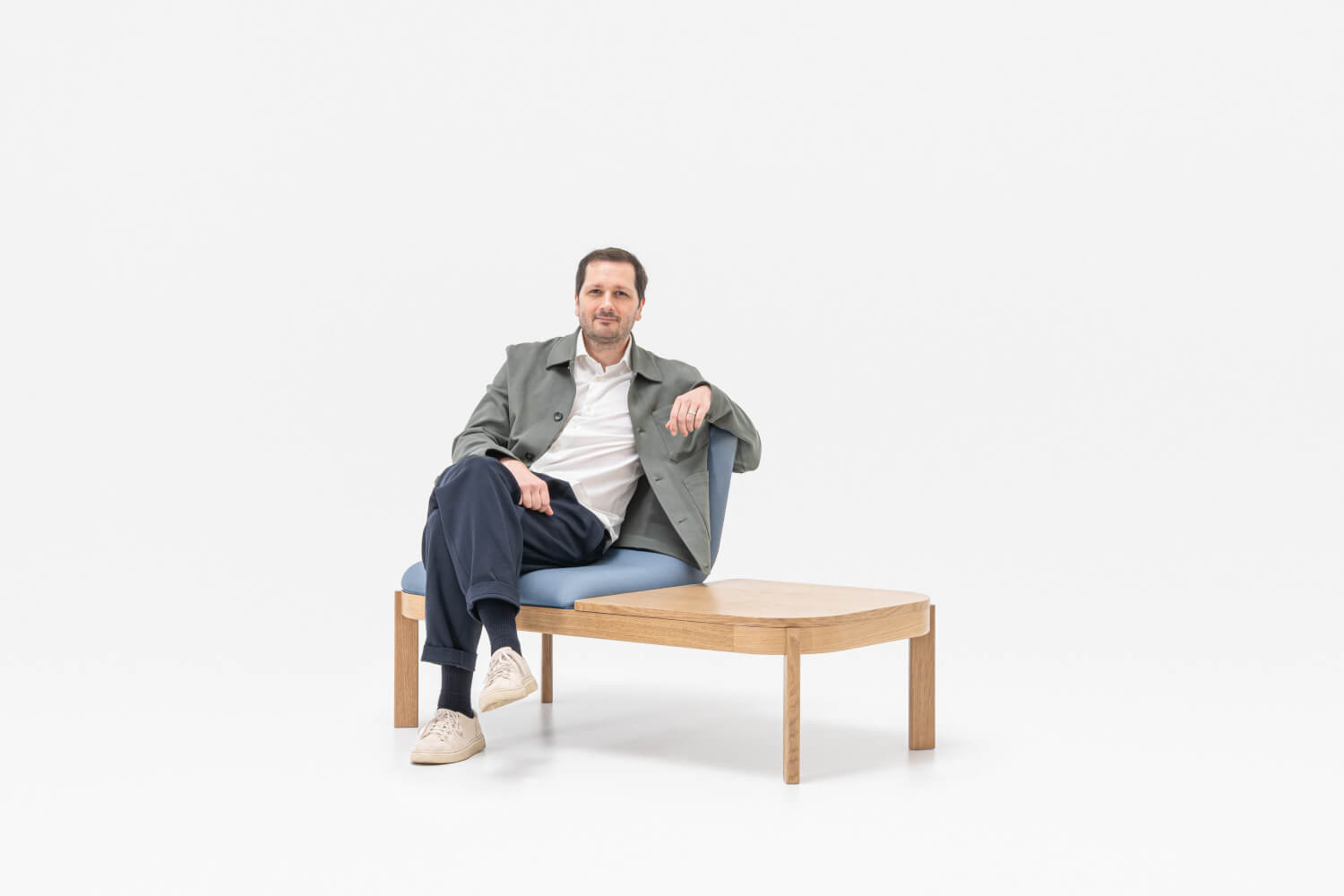
BIO:
Skrivo is a Milan-based design studio founded by Croatian industrial designer Stefan Krivokapic. Drawing from his diverse background and extensive experience, Stefan has cultivated a studio that specializes in a unique design approach. His focus tends to begin with a material, craft or production processes, leading to innovative solutions.
Holding a master’s degree in Industrial Design, Stefan Krivokapic embarked on a journey that led him to collaborate with a number of prominent design and architectural consultancies. His diverse portfolio encompasses a wide spectrum of projects, ranging from packaging and furniture to lighting, consumer electronics, and exhibition stands.
The studio's multicultural heritage has always been a driving force behind its work. It thrives on blending elements from various cultural backgrounds, incorporating history, values, materials, and processes into the creative process. This amalgamation leads to the creation of unique and innovative products.
Skrivo specializes in industrial design, primarily focusing on the furniture and lighting sectors. Its collaborations extend across Europe, where it works closely with manufacturers to bring its visions to life. It takes pride in a meticulous approach, considering manufacturing methods and conducting extensive material research to strike the perfect balance between form and function.
Since its establishment in 2012, Skrivo has had the privilege of designing furniture, lighting, and product ranges for a prestigious roster of international brands. Some of these clients include Sancal Diseño, Bolia, Miniforms, La Cividina, Softline A/S, Danese Milano, Opinion Ciatti, Amura, and Potocco.
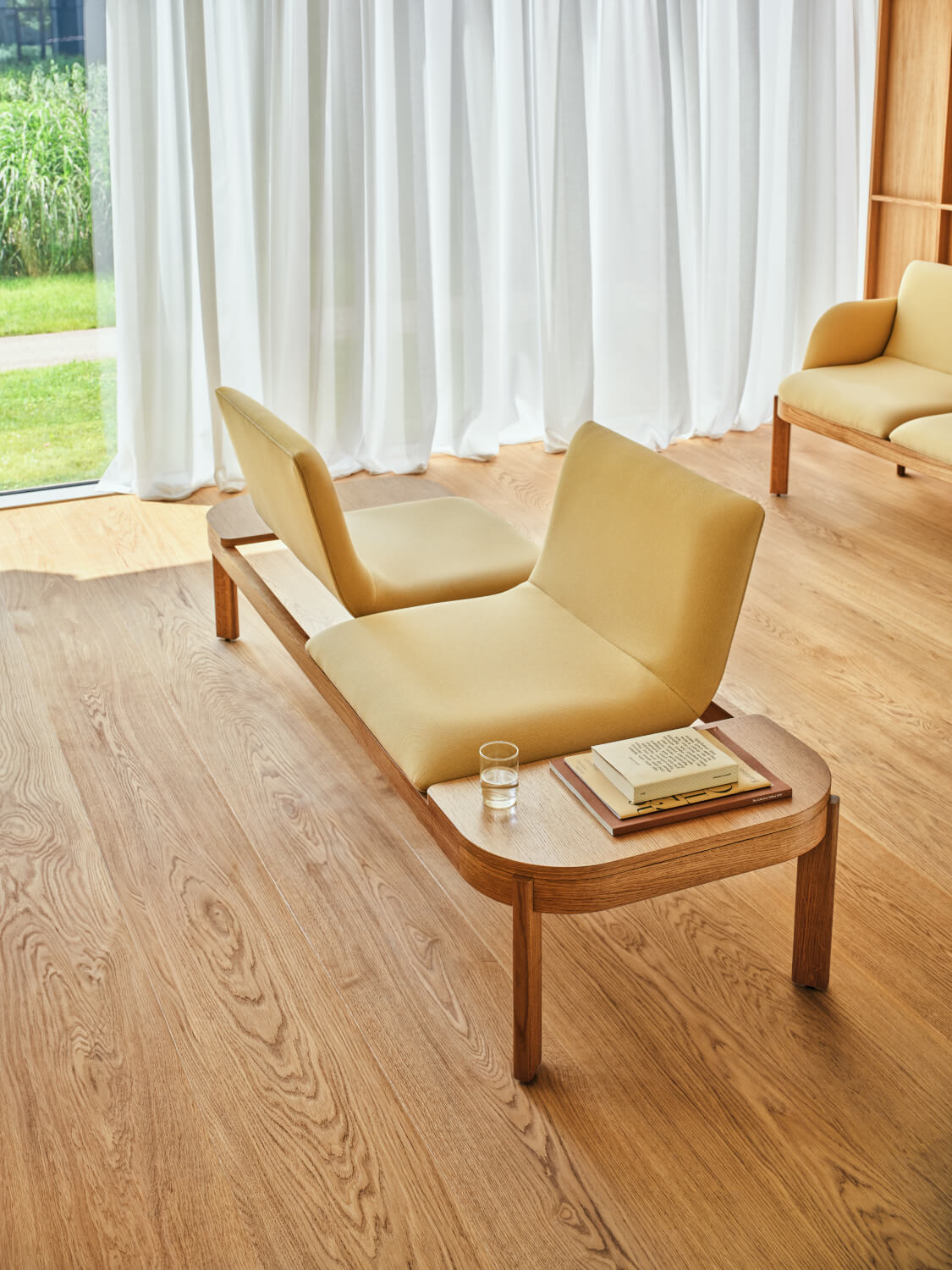
INTERVIEW:
What was the inspiration behind Ramp?
I asked myself what would be left if I take a table and peel its top off – like a can of sardines where you can see the open lid but also some of the inside. I wanted to see how this idea can be used for a chair or some other seat. My goal is always to create movement, lightness and the sense of play, to make the static furniture feel alive. I am satisfied, as Ramp has this organic, youthful quality. The name refers to skateboarding ramps, with their distinctive shape.
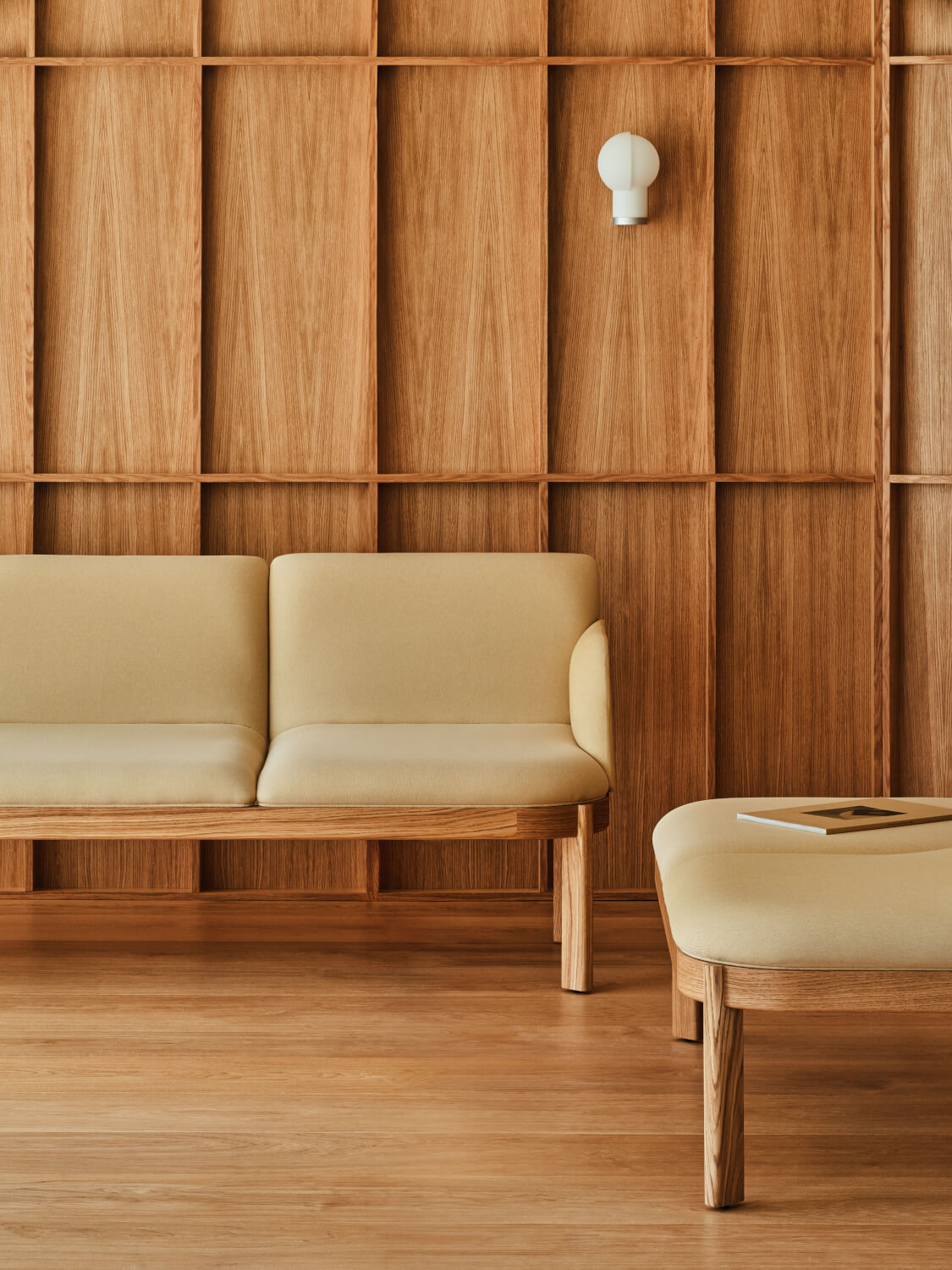
What are the key features of Ramp?
The prominent feature of Ramp is its frame. In a seat, it is usually the hidden part, whereas here it was made visible and became the main feature. I like the idea that you have the frame and then can decide what elements to put on it and where. Thus, the frame allows for freedom and uniqueness, it helps you make the seat your own.
Also, what sets Ramp apart is its organic shape. Modular furniture is usually square, and Ramp tends to be softer. The collection is characterized by curved shapes in order to look less technical and rigid compared to the vast majority of seating systems currently available on the market.
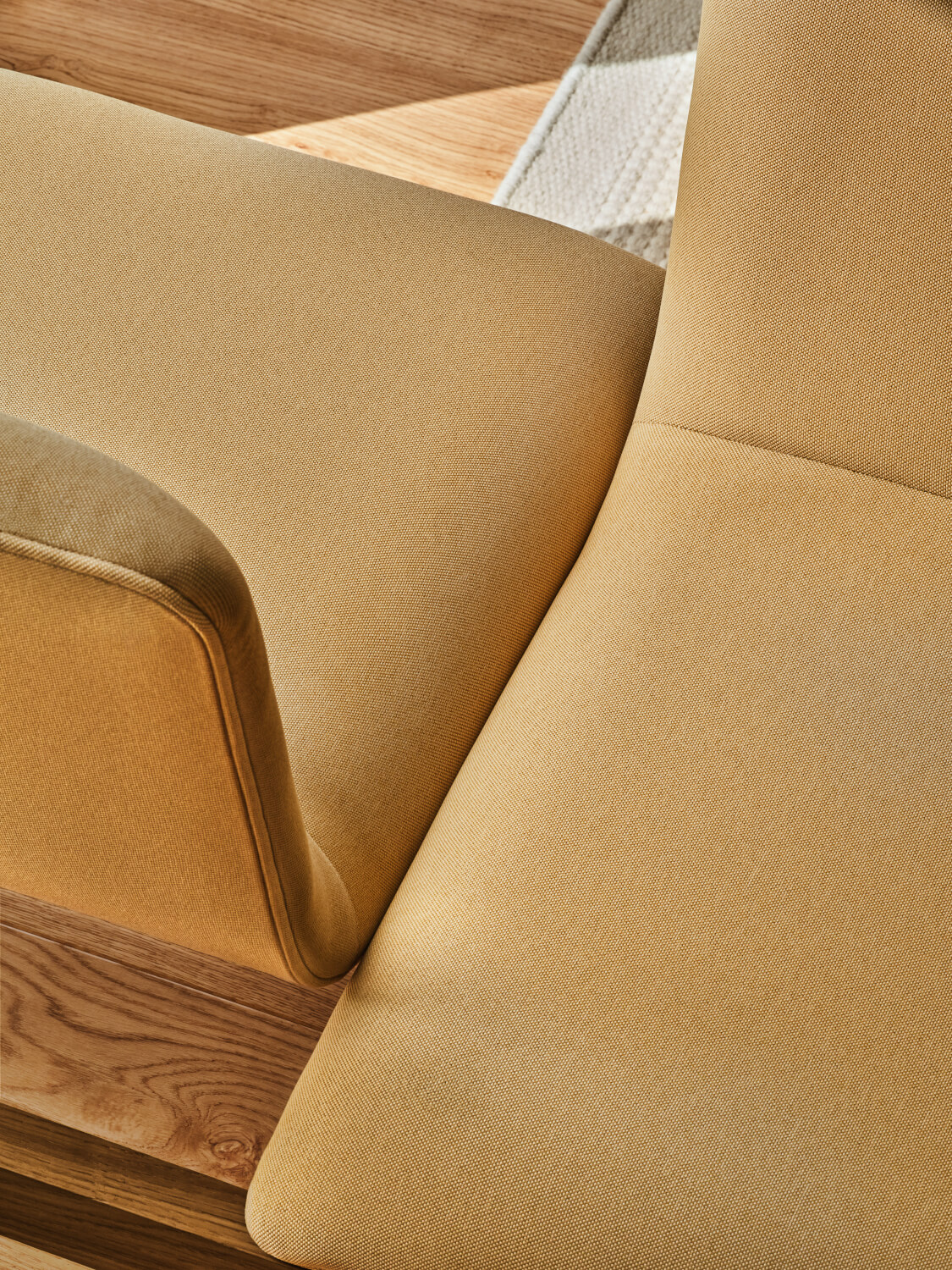
What was your design process with this product? Was it in any way different than usually?
Ramp came from a dialog, not just sketching. I was talking with someone about how interesting it would be to peel the tabletop off, so this time initially there was no drawing, but rather some back and forth of questions. Of course, sketching came up later – I usually start with some sketches and then do the 3D to see if the idea is still useful and whether any changes are needed.
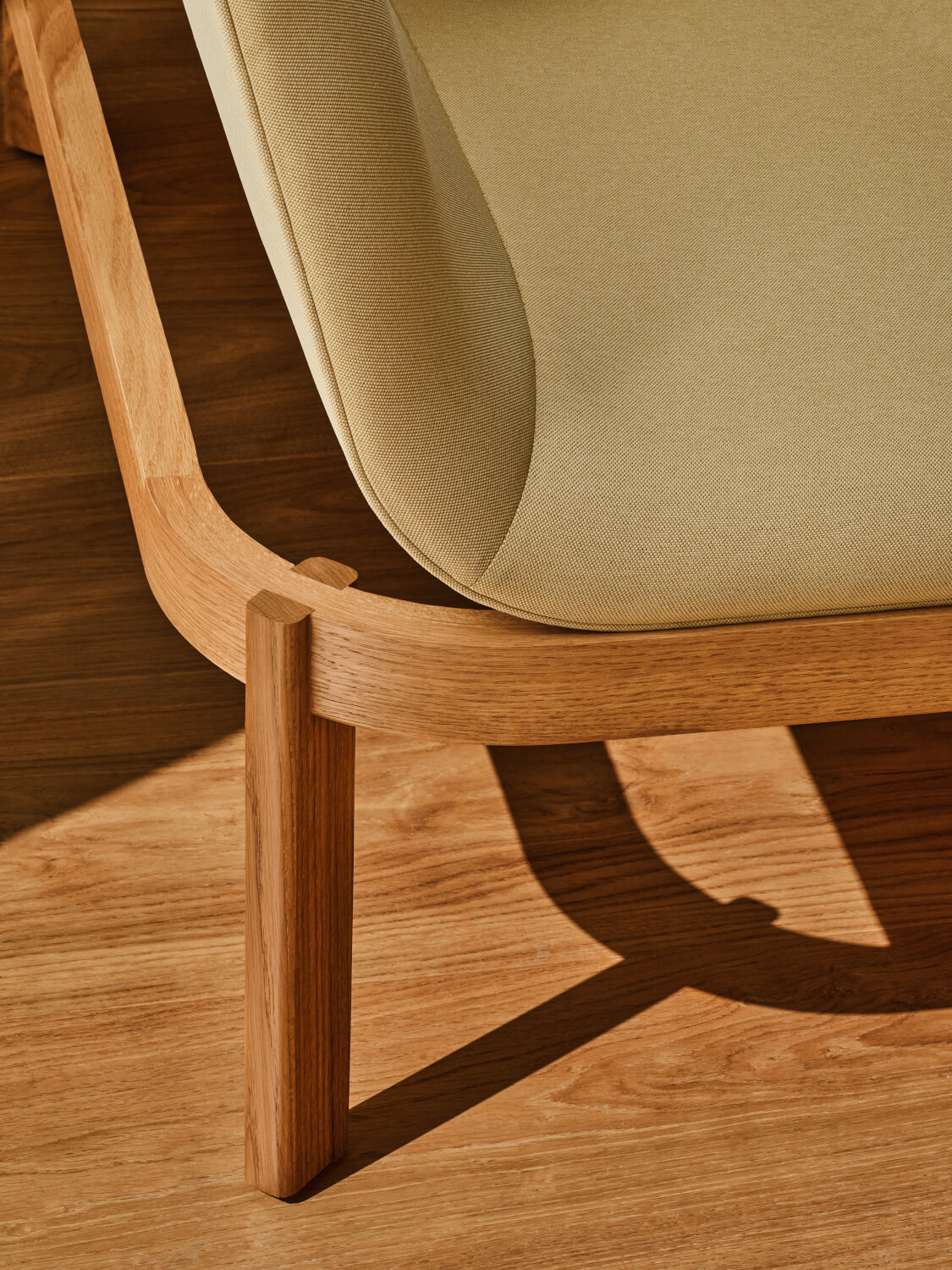
What drives you while designing furniture?
For me, designing is a challenge – there are already so many products, so with every new one I have to find new solutions. So much furniture is being made today!
I really like the initial stage, making small rough sketches on paper to pour my ideas. I am very visual and use drawing kind of like a stream of consciousness. Seeing the idea come true, being able to feel the real product, that’s a great reward. When the product is made, I like to think about its lifecycle, how it will be used, how people will interact with it.
In case of Ramp, it was designed to be easily split into parts and materials – both in terms of changing the elements that are used or damaged and in terms of rearranging the layout. It will also help at its end of life, as materials can be easily recycled. I wanted Ramp to be flexible and changing.
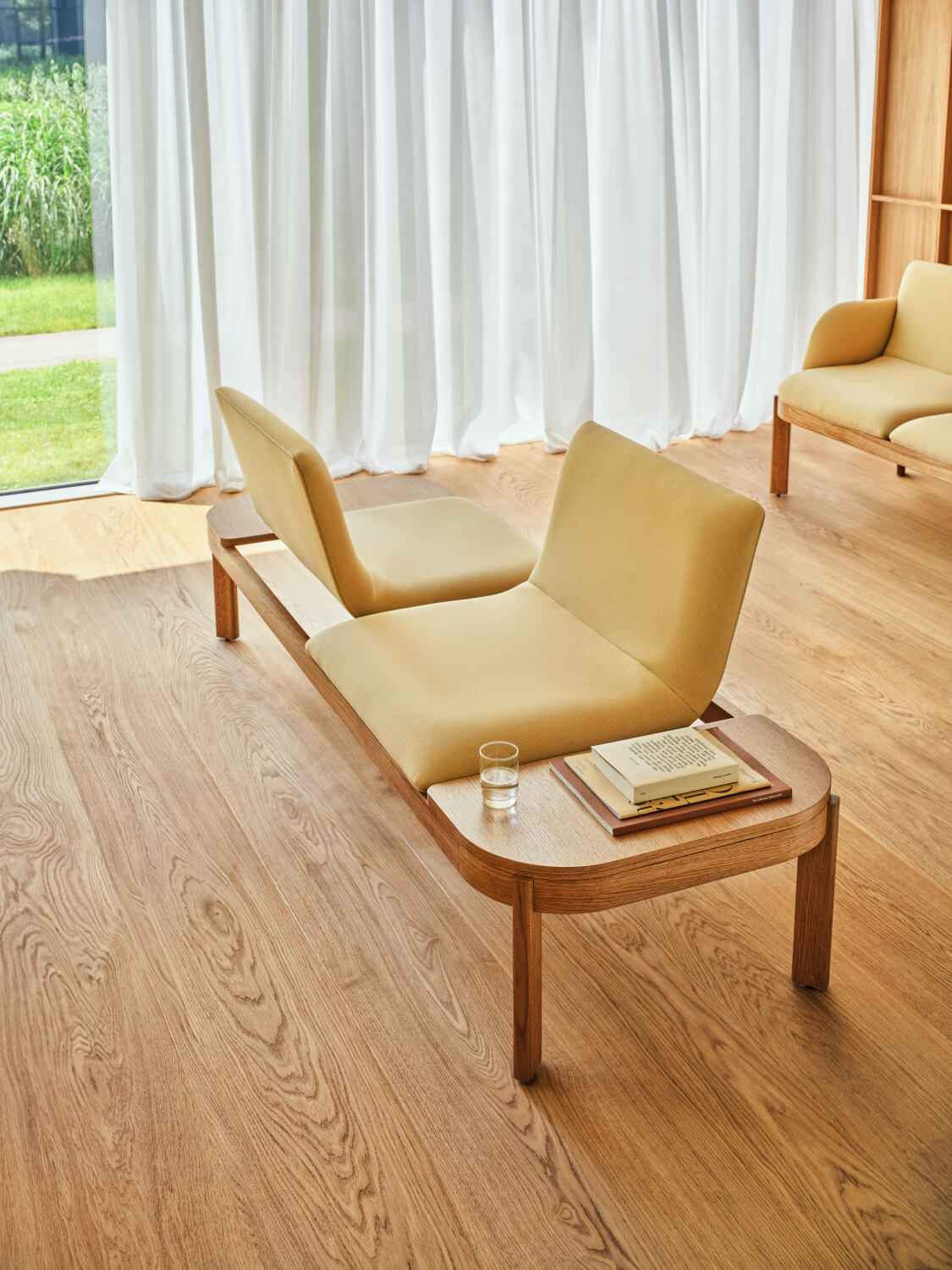
How was working with .mdd for you?
The whole cooperation process was very transparent and it was easy to communicate, which is usually tricky, as I usually work with producers from a distance. It is even more common after Covid and everyone seems used to such way of working together. This time it was all very easy and pleasant! We both had a clear vision of the final product, and I really appreciate your more conceptual approach to the design, not so traditional. Visiting the factory, I reassured myself about the synergy that we had and understood it better. Obviously, I saw photos of the prototype earlier, but seeing the real one made me appreciate the work even more.
